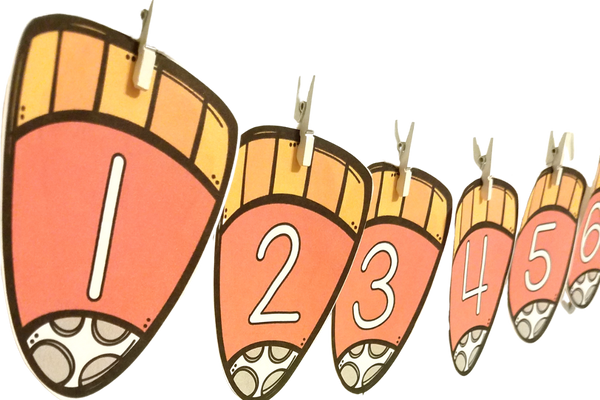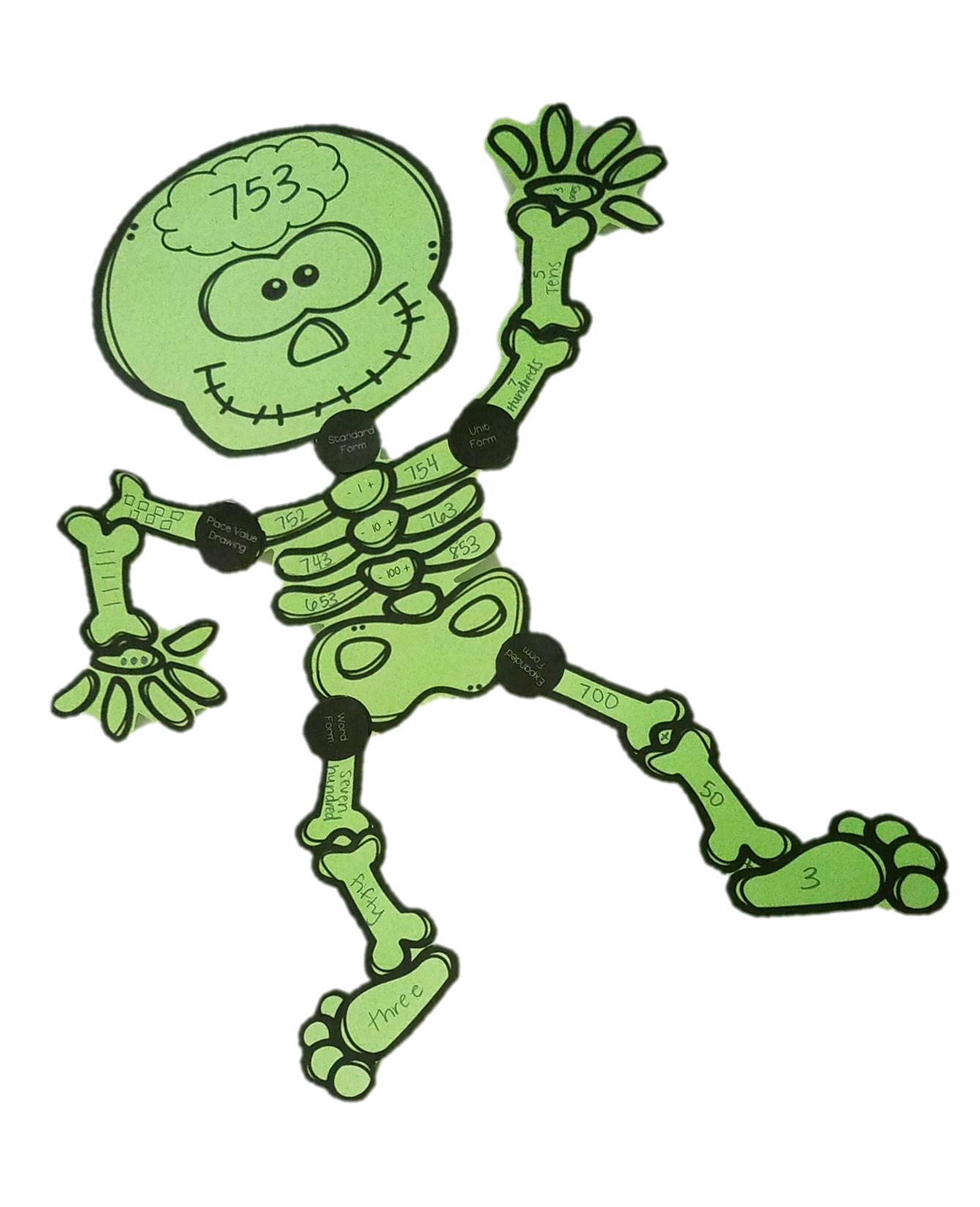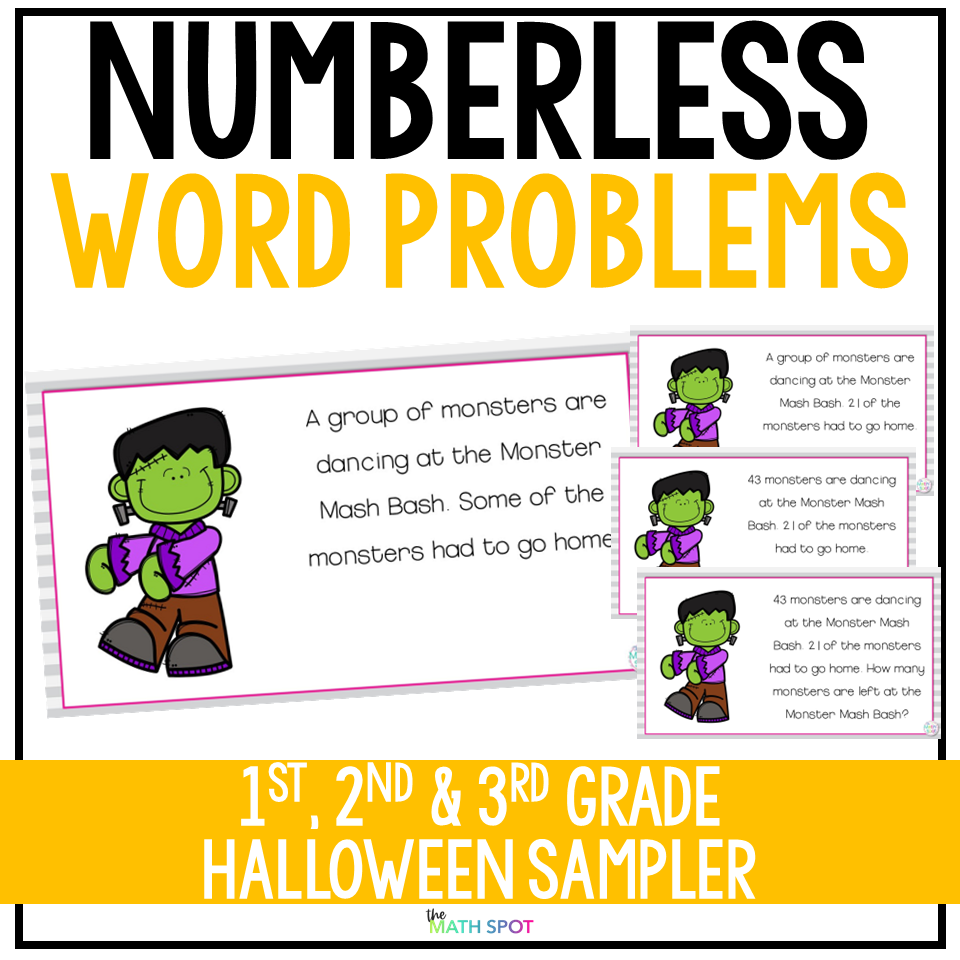The fall can be such a fun time in the classroom. Your students are excited about the changing season, the upcoming holiday, and all of the fun fall festivities they are experiencing outside of the classroom. Instead of trying to fight the excitement around Halloween, check out these fun Halloween Math Activities that allow you to lean into the season!
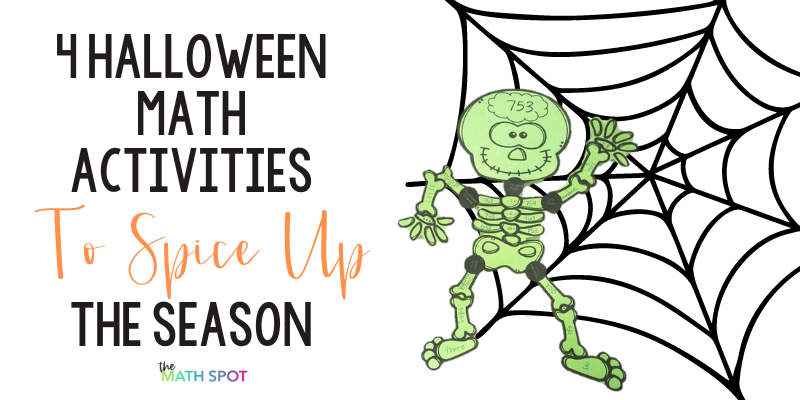
Change Up Your Manipulatives
The easiest way to level up the engagement of your activities is to simply change out the materials you are using. Need counters for your math activity? Mini pumpkin erasers will do the trick! Practicing 1:1 correspondence? Always more fun while wearing a witch finger!
I love using number lines and number paths in the classroom with kindergarten students to build number sense. Changing out your traditional number line or number path for a candy corn number line instantly makes the activity more engaging and exciting for your students!
Try this: Start with a string strung across your bulletin board with candy corn flags showing the numbers 1-10. Ask your students to close their eyes and remove one of the candy corns. Ask your students to open their eyes and call out the missing number as quickly as they can!
Another fun and simple activity involves taking all of the flags except for 1 and 10 *off* of the number line. Distribute the flags to your students. One at a time ask your students to come and hang their number on the line using a clothes pin– where might the flag go? Not only is this a fine motor strengthening activity but your students will really strengthen their inner number line in completing this activity!
Bring in a Place Value Craft
There are so many different ways to represent the same exact value! Challenge students to see the flexibility in ways we can name a number with a creepy Halloween craftivity.
Step 1:
Ask your students to think of a 2 or 3-digit number.
Step 2:
Either assign a variety of representations to your students or brainstorm as a class about the different ways that you could represent a number. Allow your students to use hands-on manipulatives as they create their representations. Include ideas such as:
- Standard Form
- Unit Form
- Word Form
- Expanded Form
- Place Value Drawings
- Addition Equations (Could you write an equation that results in your number?)
- Subtraction Equations (Could you write a subtraction equation that results in your number?)
- Represent as money
- Etc!
Write the different representations on different parts of a Halloween shape. The most simple would be to create spiders. A circle forms the body where students write their number and the legs each become a place to represent that number in a different way.
Change Up A Classic Estimation Activity
It’s an old favorite for classroom parties and holiday events: A jar is filled with holiday candy and the task is to guess how many pieces of candy are inside. We can elevate this activity so that your students can strengthen their math skills rather than reaching for a random guess.
Variation #1: Take one scoop from the jar and ask your students “How many scoops do you think it will take to empty the jar?” As you remove scoops ask students to adjust their estimate.
Variation #2: Ask your students to guess how many candies are in the jar. Next, dump part of the candies out (this amount can vary but in the example shown 1/4 of the jar would likely be effective!) Count the candies that you have dumped out of the jar and ask students to adjust their estimate. Continue to dump small amounts from the jar, count and ask students to adjust their thinking.
These activities give your students data to anchor their estimation but also require quite a bit of mental math as your students adjust and calculate their new estimate as new information is added.
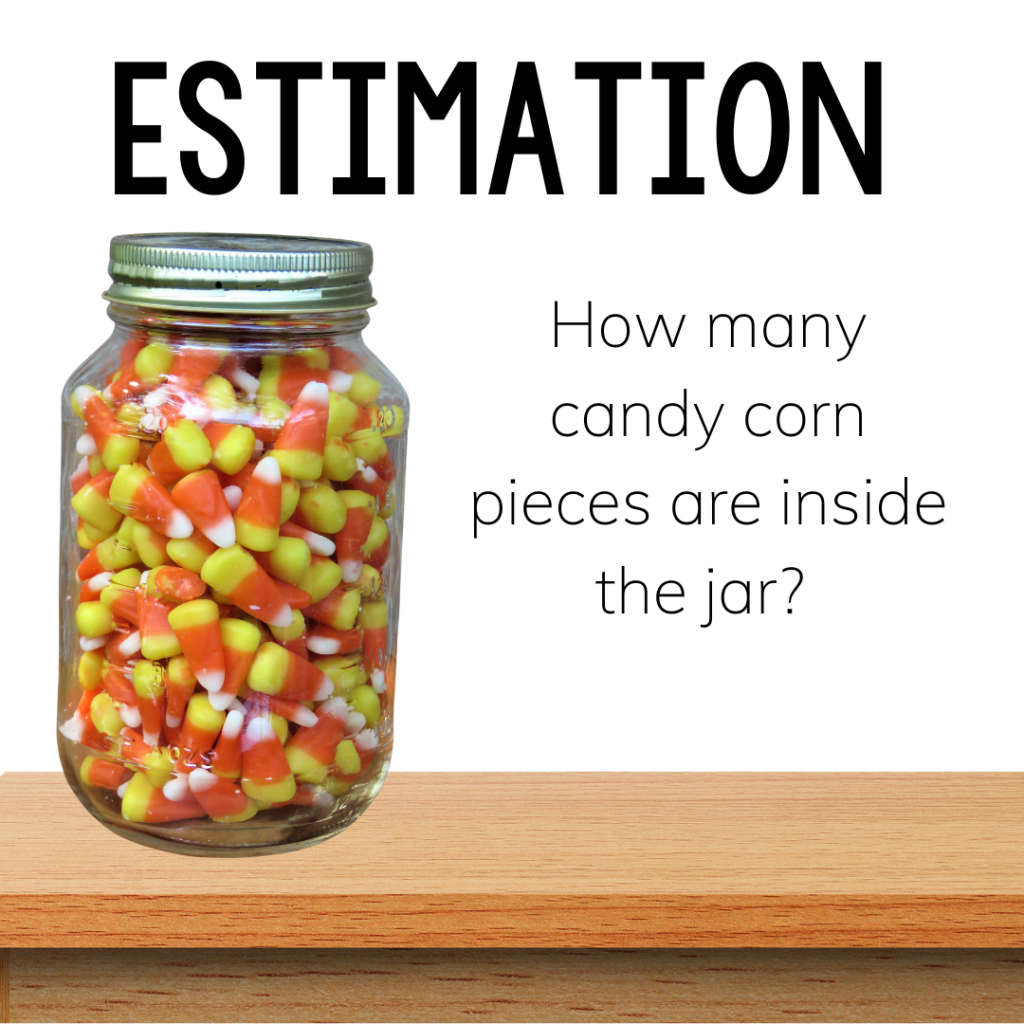
Theme Your Word Problem Practice
Something as simple as making your word problems revolve around the season can spice up an activity. If you haven’t tried numberless word problem yet, this fall is the perfect time to try them out! I’m linking to a free set of fall numberless word problems here that you can use in your classroom.
Numberless word problems are perfect for your “number pluckers”– those students who read (or don’t read) a word problem, hunt for the numbers, pluck them out and add them together.
Instead, numberless word problems take your students through a sequence that starts with no numbers at all and gradually introduces them back in. Numberless word problems force your students to attend to the action of a word problem.

